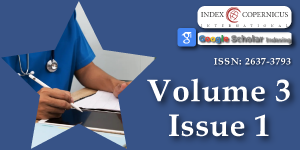Orgasmic coitus triggered stillbirth via placental abruption: A case report
Main Article Content
Abstract
Sexual activity during healthy pregnancy is safe. There are little data on how coital activity affects outcome of the high-risk pregnancies. Hereby we report a case demonstrating that orgasmic coitus triggered placental abruption resulting in preterm stillbirth.
A 38-year-old 8-para, 12-gravida woman lived unmarriedly with a constant partner in low socioeconomic conditions. Her previous pregnancies included 7 deliveries without complication, two early miscarriages and two pregnancy terminations. Her present pregnancy was complicated with gestational hypertension successfully treated with nifedipine. She had coitus 2 to 4 times a month, mostly without orgasm. The last coitus which happened in side-by-side position was accompanied by orgasm which continued in uterine hypertonicity and massive vaginal bleeding at 29 weeks gestation. Two hours subsequently, on admission to hospital, placental abruption and fetal demise were diagnosed. At the emergency cesarean section, a dead female infant weighing 1,510 g was born. Fetal pathology was not discovered. Placental histopathology showed retroplacental hematoma, intervillous and decidual hemorrhages, focal distal villous hypoplasia and avascular villuses. Patient’s recovery rapidly occurred after intensive care.
Placental abruption complicates 0.4% - 1.0% of deliveries. It is known that most cases of abruption cannot be predicted and prevented. Our report suggests that orgasmic coitus may be a trigger for placental abruption in those women who have gestational hypertension and multiple risks for placental abruption. We infer from the above case that sexual intercourse is advised to avoid during pregnancy of such women in order to prevent placental abruption.
Article Details
Copyright (c) 2019 Zsoldos M, et al.

This work is licensed under a Creative Commons Attribution-NonCommercial 4.0 International License.
Oyelese Y, Ananth, CV. Placental abruption. Obstet Gynecol. 2006; 108: 1005-1016. PubMed: https://www.ncbi.nlm.nih.gov/pubmed/17012465
Tikkanen M. Placental abruption: epidemiology, risk factors and consequences. Acta Obstet Gynecol Scand. 2011; 90: 140-149. PubMed: https://www.ncbi.nlm.nih.gov/21241259
Ananth CV, Vintzileos AM. Ischemic placental disese: epidemiology and risk factors. Eur J Obstet Gynecol Reprod Biol. 2011; 159: 77-82. PubMed: https://www.ncbi.nlm.nih.gov/pubmed/21839575
Boisramé T, Sananès N, Fritz G, Boudier E, Aissi G, et al. Placental abruption: risk factors, management and matenal-fetal prognosis. Cohort study over 10 years. Eur J Obstet Gynecol Reprod Biol. 2014; 179: 100-104. PubMed: https://www.ncbi.nlm.nih.gov/pubmed/24965988
Ananth CV, Oyelese Y, Prasad V, Getahun D, Smulian JC. Evidence of placental abruption as a chronic process: associations with vaginal bleeding early in pregnancy and placental lesions. Eur J Obstet Gynecol Reprod Biol. 2006; 128: 15-21. PubMed: https://www.ncbi.nlm.nih.gov/pubmed/16513243
Omar NS, Tan PC, Sabir N, Yusop ES, Omar SZ. Coitus to expedite the onset of labour: a randomised trial. Br J Obstet Gynaecol. 2013; 120: 338-345. PubMed: https://www.ncbi.nlm.nih.gov/pubmed/23145957
Carbone L, De Vivo V, Saccone G, D’Antonio F, Mercorio A, et al. Sexual intercourse for induction of spontaneous onset of labor: A systemic review and meta-analysis of randomized controlled trials. J Sex Med. 2019; 16: 1787-1795. PubMed: https://www.ncbi.nlm.nih.gov/pubmed/31521572
Sayle AE, Savitz DA, Thorp JM Jr, Hertz-Picciotto I, Wilcox AJ. Sexual activity during late pregnancy and risk of preterm delivery. Obstet Gynecol. 2001; 97: 283-289. PubMed: https://www.ncbi.nlm.nih.gov/pubmed/11165596
Aziken ME. Abruptio placenta following sexual intercourse: case report. Niger Postgrad Med J. 2003; 10: 113-114. PubMed: https://www.ncbi.nlm.nih.gov/pubmed/14567049
Naeye RL. Coitus and antepartum haemorrhage. Br J Obstet Gynaecol. 1981; 88: 765-770. PubMed: https://www.ncbi.nlm.nih.gov/pubmed/7248236
Brink AL, Odendaal HJ. Risk factors for abruptio placentae. S Afr Med J. 1987; 72: 250-252. PubMed: https://www.ncbi.nlm.nih.gov/pubmed/3616809
Räisänen S, Gissler M, Nielsen HS, Kramer MR, Williams MA, et al.Social disparity affects the incidence of placental abruption among multiparous but not nulliparous women: a register-based analysis of 1,162,126 singleton births. Eur J Obstet Gynecol Reprod Biol. 2013; 171: 246-251. PubMed: https://www.ncbi.nlm.nih.gov/pubmed/24094822
Morales-Roselló J, Khalil A, Akhoundova F, Salvi S, Morlando M, et al. Fetal cerebral and umbilical Doppler in pregnancies complicated by late-onset placental abruption. J Matern Fetal Neonatal Med. 2017; 30: 1320-1324. PubMed: https://www.ncbi.nlm.nih.gov/pubmed/27484964
Chahal HS, Gelaye B, Mostofsky E, Sanchez SE, Mittleman MA. et al. Physical exertion immediately prior to placental abruption: A case-crossover study. Am J Epidemiol. 2018; 1287: 2073-2079. PubMed: https://www.ncbi.nlm.nih.gov/pubmed/29992226
He S, Kosatsky T, Smargiassi A, Bilodeau-Bertrand M, Auger N, et al. Heat and pregnancy-related emergencies: Risk of placental abruption during hot weather. Environ Int. 2018; 111: 259-300. PubMed: https://www.ncbi.nlm.nih.gov/pubmed/29146008
Polomeno V. Sex and pregnancy: A perinatal educator’s guide. J Perinatal Educ. 2000; 9: 15-27. PubMed: https://www.ncbi.nlm.nih.gov/pmc/articles/PMC1595041/
Chayen B, Tejani N, Verma UL. Fetal heart rate changes and uterine activity during coitus. Acta Obstet Gynecol Scand. 1986; 65: 853-855. PubMed: https://www.ncbi.nlm.nih.gov/pubmed/3825526
Goodline RC, Schmidt W, Creevy DC. Uterine tension and fetal heart rate during maternal orgasm. Obstet Gynecol. 1972; 39: 125-127. PubMed: https://www.ncbi.nlm.nih.gov/pubmed/5008272
Odame Anto E, Owiredu WKBA, Sakyi SA, Turpin CA, Ephraim RKD, et al. Adverse pregnancy outcomes and imbalance in angiogenic growth mediators and oxidative stress biomarkers is associated with advanced maternal age births: A prospective cohort study. PLoS One. 2018; 13: e0200581.PubMed: https://www.ncbi.nlm.nih.gov/pubmed/30016351
Palmeri ST, Kostis JB, Casazza L, Sleeper LA, Lu M, et al. Heart rate and blood pressure response in adult men and women during exercise and sexual activity. Am J Cardiol. 2007; 100:1795-1801. PubMed: https://www.ncbi.nlm.nih.gov/pubmed/18082530





